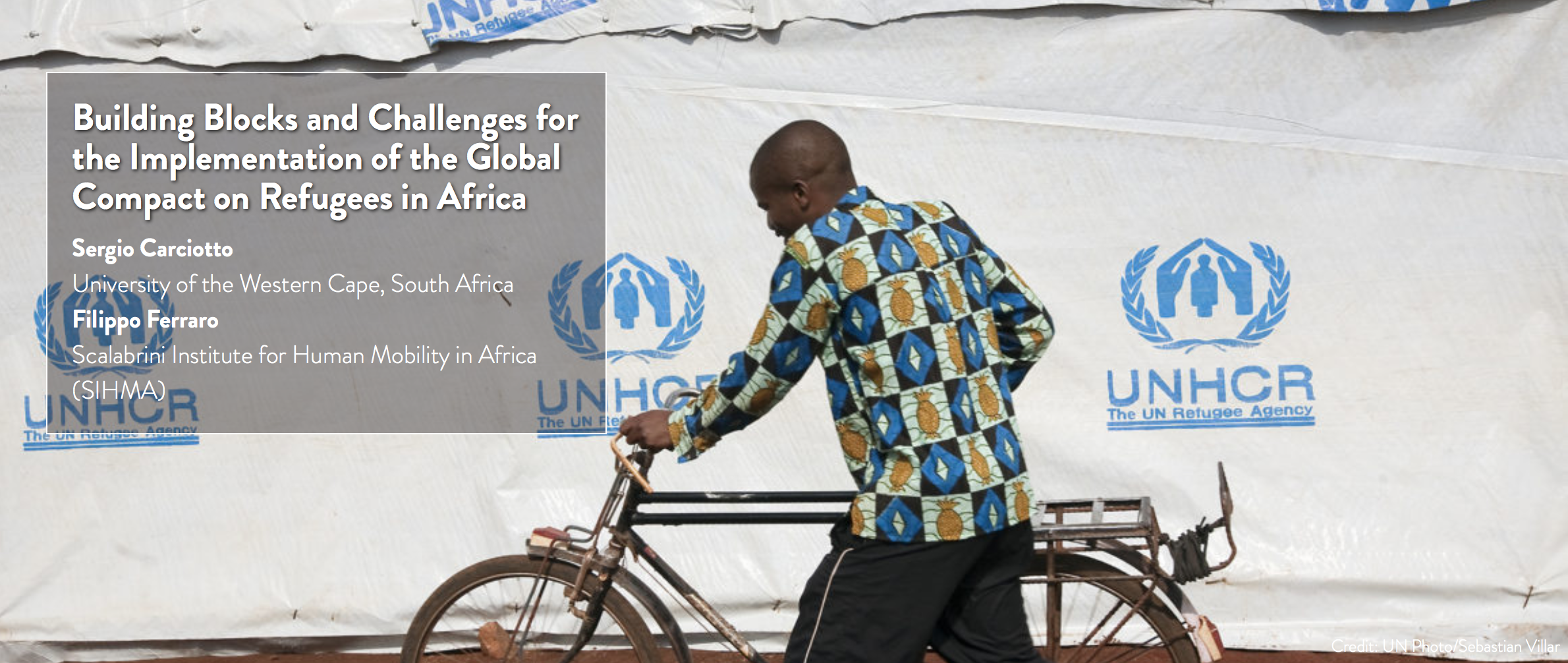
Building Blocks and Challenges for the Implementation of the Global Compact on Refugees in Africa - Research Article
On the 18th of March, 2020 the Journal on Migration and Human Security of CMS, the Center for Migration Studies of New York published the research article ‘Building Blocks and Challenges for the Implementation of the Global Compact on Refugees in Africa’, written by Filippo Ferraro, our SIHMA’s Executive Director and Sergio Carciotto, our AHMR Editor Assistant. The CMS is a member of the Scalabrini International Migration Network (SIMN), a global network of migrant shelters, service centers and other institutions, and it is our patner among the Scalabrini Migration Study Centers, a network of think-tanks on international migration and refugee protection.
The article points out key challenges and highlight promising initiatives for refugees in sub-Saharan Africa. Forced displacement continues to be a major challenge to human security across the globe. According to the United Nations High Commissioner for Refugees (UNHCR), the global population of forcibly displaced people increased by 2.3 million people in 2018, and by the end of the year, more than 70 million individuals were forcibly displaced worldwide (UNHCR 2019a). UNHCR also estimated that, in 2018, 13.6 million people were newly displaced as a result of conflicts and droughts (ibid.)
Building on the predicament of global sustainability and the 2030 agenda for sustainable development, the Global Compact on Refugees (GCR) is a framework based on four strategic objectives: to (1) ease pressures on host countries, (2) enhance refugee self-reliance, (3) expand access to third-country solutions, and (4) support conditions in countries of origin for return in safety and dignity (UNHCR 2018; UN General Assembly 2019). The GCR urges the international community to respond comprehensively and innovatively to the plight of refugees, and to make a paradigm shift in global humanitarian aid to emphasize refugee self-reliance and livelihoods. One of the risks of such a nonbinding and thin agreement, however, is that the GCR will give rise to a bureaucratic process that “does not come even close to dependably addressing the operational deficits of the refugee regime” (Hathaway 2019, 594).
This article looks closely at the prospects for the (GCR) in sub-Saharan Africa based on the need to shift from a humanitarian system of “care and maintenance” to comprehensive and effective development responses to refugee crises. It also discusses some of these experiences and best practices to promote a resilience-based development approach. It recognizes that development initiatives implemented or still to be implemented under the normative framework of the GCR and the Comprehensive Refugee Response Framework (CRRF) are subject to a multiyear planning and implementation cycle. Therefore, this article does not intend to evaluate their efficacy or measure progress under the GCR, but rather to identify key challenges and to highlight achievements and promising initiatives in sub-Saharan Africa. It particularly focuses on implementation and rollout of the CRRF in Chad, Djibouti, Ethiopia, Kenya, Rwanda, Somalia, Uganda, and Zambia in Africa.
For full Research Article: https://cmsny.org/publications/jmhs-carciotto-ferraro-3-20-20/
Categories:
Tags:

